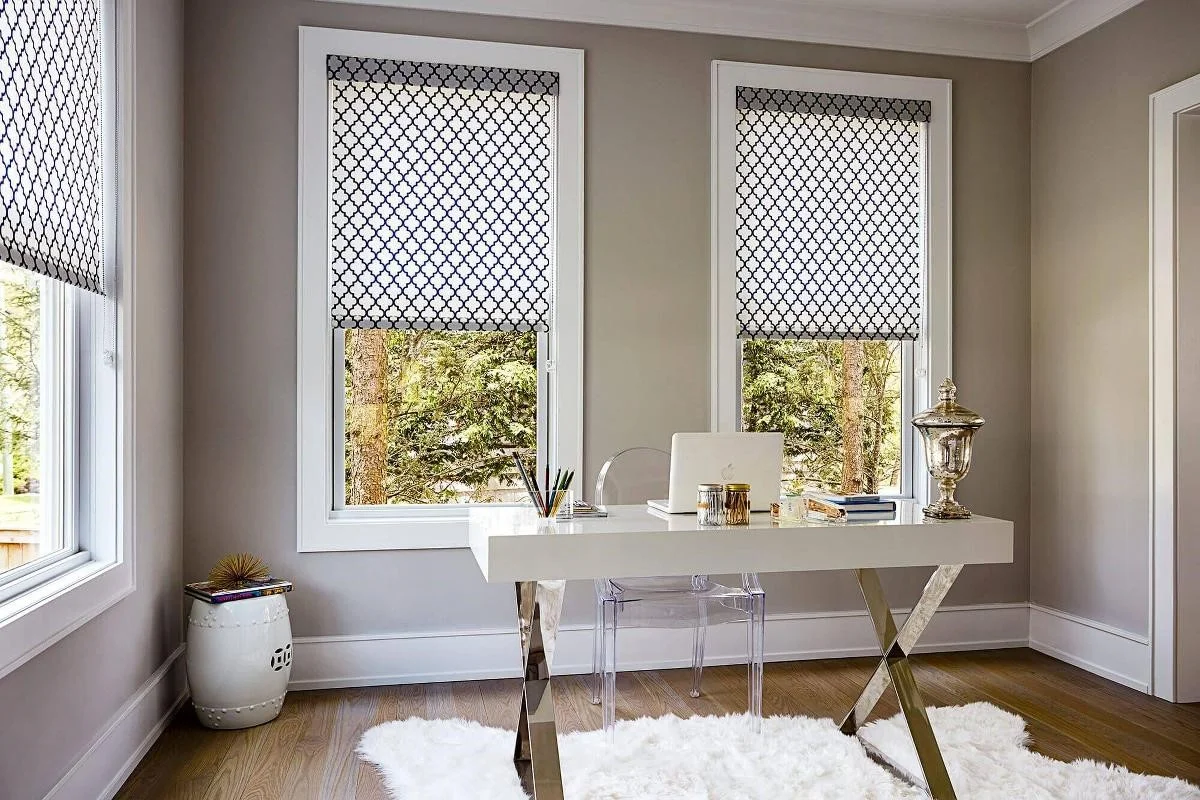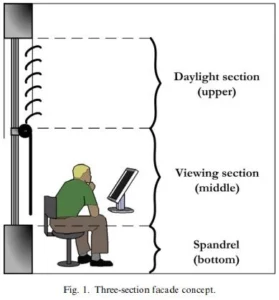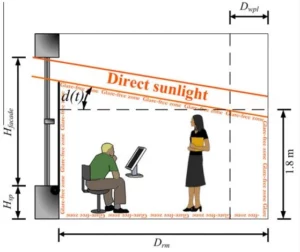
Motorized Roller Shades Jenks | History of Motorized Shades
09-Jun
If you need the best motorized roller shades Jenks has, look no further! In 2005, electric lighting energy consumption accounted for 30% of the world’s electricity used in the commercial sector. Moreover, electric lighting is not only responsible for a considerable amount of electrical loads, but it can also significantly increase cooling energy consumption in buildings.
The transparent area of office building facades is continuously increasing as a result of two factors:
- The availability of glazing with higher thermal resistance and suitable daylight transmittance.
- The association of large window areas with better view to the outdoor environment and with an enhanced feeling of wellbeing, increasing occupants, alertness and productivity due to higher levels of daylight.
Motorized Roller Shades
Different types of dynamic building envelope systems were simulated, considering a range of variables such as window-to-wall ratio, glazing type, shading device type, properties and control strategies, as well as electric lighting control options and natural ventilation. The objectives were to maximize the daylight use while reducing energy demand for heating/cooling/lighting and at the same time maintain visual and thermal comfort for the occupants.

Despite the fact that bottom windows were twice the size of the top ones, the “top blind” configuration performed significantly better than the “bottom blind” configuration by reducing electric lighting energy consumption – regardless of the lighting control strategy applied, illustrating the advantage of daylight penetration into the room from the upper window section. Get the best motorized roller shades Jenks has today.
A motorized bottom-up roller shade with configurable automatic control is studied in this paper as a means of applying a simplified three-section facade concept. The bottom-up shade is a roller shade that operates in the opposite direction of a conventional roller shade, which opens from top to bottom.
Main Advantage
Its advantage, compared to conventional roller shades, is that it covers the bottom part of the window, providing shading and glare protection as well as privacy to the occupants, while allowing daylight to enter from the top section and illuminate the deeper parts of the space. Get the best motorized roller shades Jenks has today.
While manually operated bottom-up blinds have been available for some time, it is the recently available automatic control of their position that opens numerous possibilities for their widespread utilization in office buildings.
Conducting Experiments
The interior test room dimensions are: 1.5m (width) 3.2m (length) 3.4m (height). The facade surface azimuth is approximately 19.6 west of south and there are no exterior obstructions. It consists of three sections: the opaque spandrel that extends 0.8 m from the floor, the lower “clear glass” section and the upper “fritted glass” section.
Each glazing is 1.3 m high and 1.5 m wide. A motorized bottom-up shade moves along vertical tracks, attached to the curtain wall frame. The reflectance of the room surfaces are: qwall = 70%, qfloor = 5% and qceiling = 80%. The clear and fritted glazing have a normal visible transmittance of 70% and 45%, respectively.
Bottom-Up Shades
The bottom-up shade fabric is white, open weave and its optical properties are. Visible transmittance is 18%, visible reflectance is 74% and perforation is 5%. The visible transmittance of the shade was measured using two silicon photodiode photometers. They provide a spectral response, a linear response up to 100,000 lux. Thus a cosine correction for an angle of incidence up to 80 and an absolute error 5%. The total illuminance incident and the other behind the shade in order to measure the shade.
Development of a control strategy for bottom-up shades
Considering the unique operating characteristics of bottom-up shades. Glare-Free Zone (GFZ) Thus, the concept of a ‘Glare-Free Zone’ (GFZ), alternatively described as a cubic space within a room. In order to achieve a GFZ, the interior shading devices should be positioned so as to block direct sunlight from entering the occupied area. For seated and standing occupants. Giving the position of a bottom-up shade (GFZ) as a fraction of the total height of the window. Get the best motorized roller shades Jenks has today.
Acceptable Work plane Illuminance (AWI)
Between the shade position and outdoor illuminance, in order to maintain the average work plane. Illuminance at minimum levels (500 lux) and do not exceed the value of 1000 lux. Thus, locally on the work plane, as proposed at the “common visual tasks”. As a fraction of the total height of the window. The Levenberg–Marquardt method was used to identify the coefficients of the proposed correlation-based model. It is based on simulation data, for the Equinox and summer solstice.
Motorized Roller Shades Jenks
Furthermore, this study about daylighting performance of bottom-up motorized shades through modeling and full-scale experiments. Two different control strategies were introduced in order to ensure proper lighting conditions for the occupants. The ‘Glare-Free Zone’ (GFZ) and the Acceptable Work plane Illuminance (AWI). For the GFZ, the shade position is calculated as a function of the solar and room geometry. Thus in order to protect occupants from direct glare and at the same time allow some direct sunlight. It will penetrate into the office and illuminate the back part of the room. Get the best motorized roller shades Jenks has today.
Calculation
At 500 lux and simultaneously not to exceed the value of 1000 lux locally on the work plane. A sensitivity analysis of the impact of bottom-up shade optical properties. The results showed that the bottom- up shade of visible transmittance equal to s = 10% performs better. In terms of daylight utilization and reduction of energy consumption for electric lighting.

More Decor Design
Furthermore, direct or reflected glare may occur during sunny days, due to high shade transmittance. As the bottom- up shade is an interior shading device, its impact on thermal comfort and solar gains transmission. Combined with a reflective venetian blind in the daylight section of a three- section facade. This shading configuration will provide shading and privacy. While redirecting or diffusing the daylight onto the ceiling, minimizing the possibility of glare to occur.
